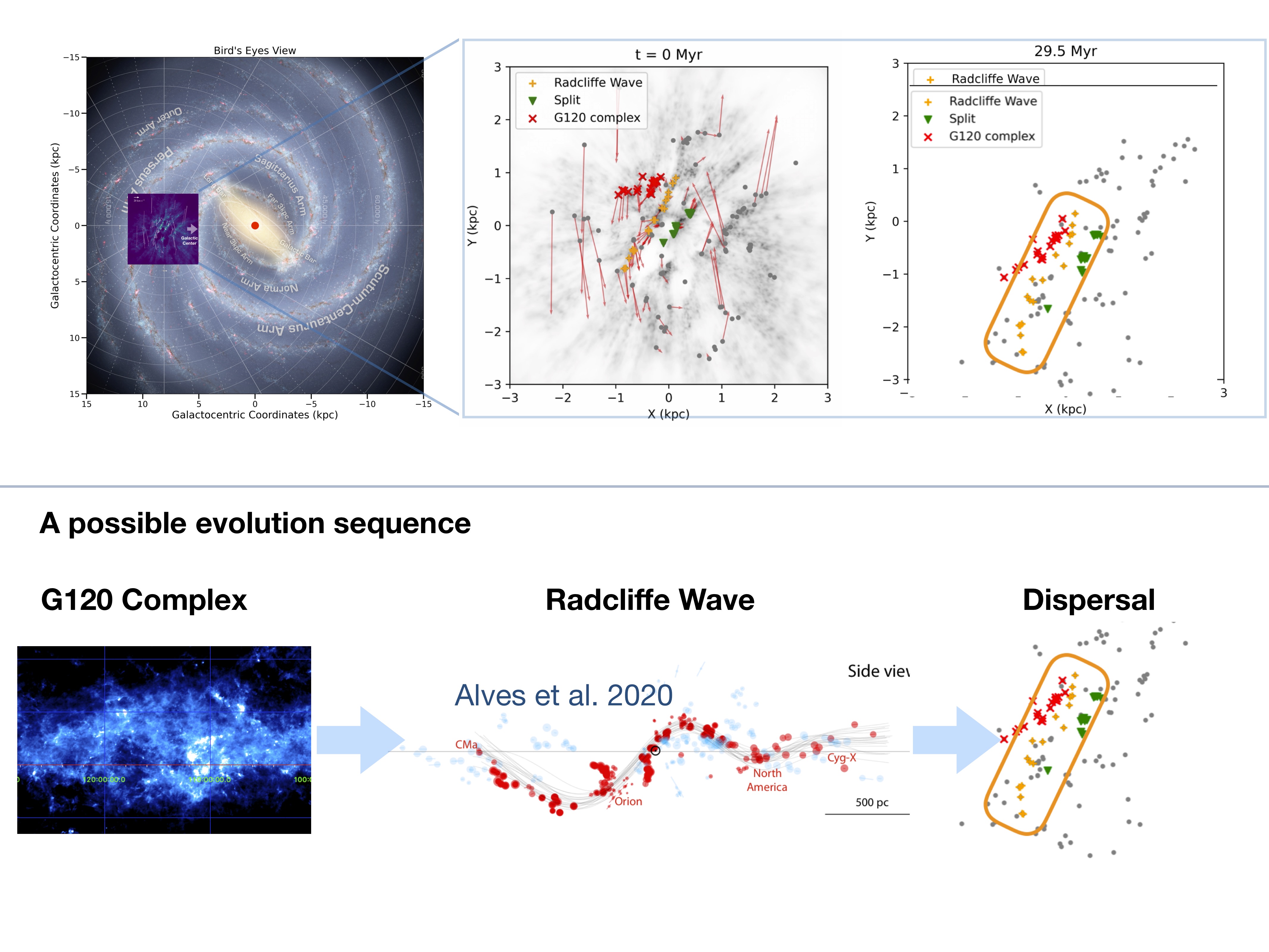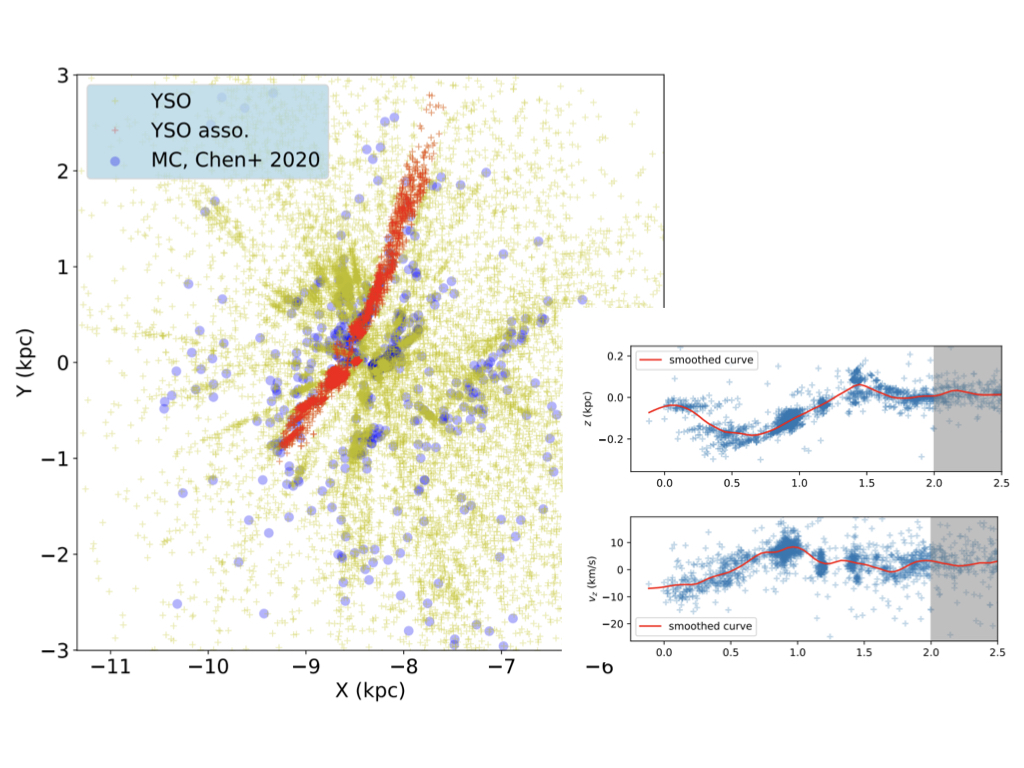Under modern observations from multiple wavelengths, a complete picture of interstellar medium
ISM evolution and star formation is emerging. Observations The Gala satellite maps the distributions and kinematics
of stars, which, in many cases, is the missing piece of the puzzle. We combine multi-wavelength observations to
establish a comprehensive picture of ISM evolution, to reveal the key physics at work.
Highlights

Gaia predicts the future of the Milky Way Interstellar Medium
In Weather Forecast of the Milky Way: Shear and Stellar feedback determine the lives of Galactic-scale filaments
we trace the evolution of the molecular ISM using a sample of Young Stellar
Objects (YSO) association --molecular cloud complex (YSO-MC complex), and predict a future configurations of the local ISM.

The hidden velocity structure of the Radcliffe Wave
In Discovery of a coherent, wave-like velocity pattern for the Radcliffe Wave
We use the proper motions of Young Stellar Objects (YSOs) anchored inside the clouds to study the kinematic structure of
the Radcliffe Wave in terms of vz, and identify a damped, wave-like pattern from the vz space, which we call "velocity
undulation".

Gaia view of Milky Way interstellar Medium
In Zhou, Li & Chen (2021), we present a first catalog of
YSO associations in the solar neighborhood. The sample allows us to study the motion of gas, constrain
the origin of molecular
cloud turbulence, understand the nature of Giant Filamentary Structures, and identify cloud collision
candidates.


